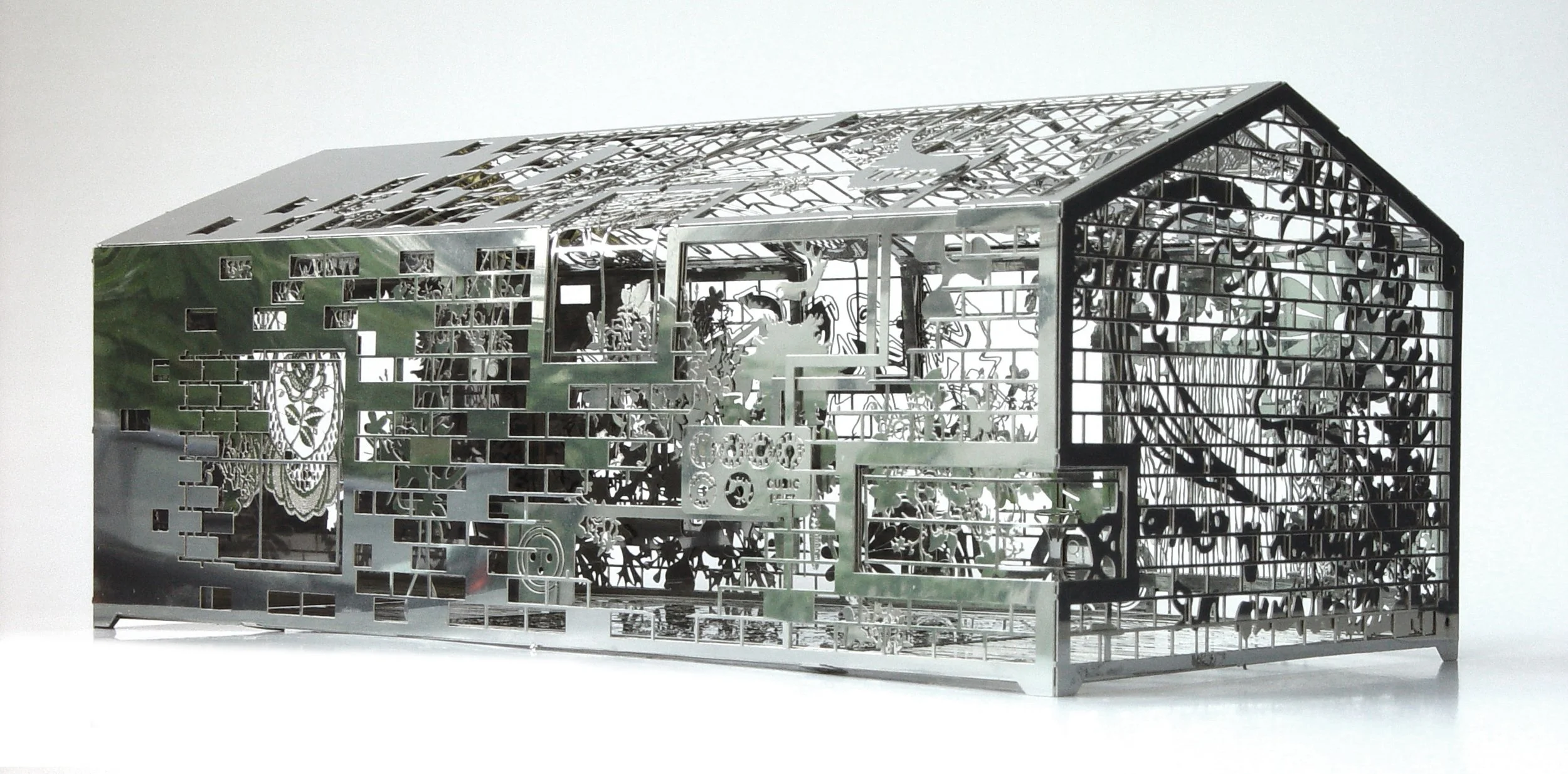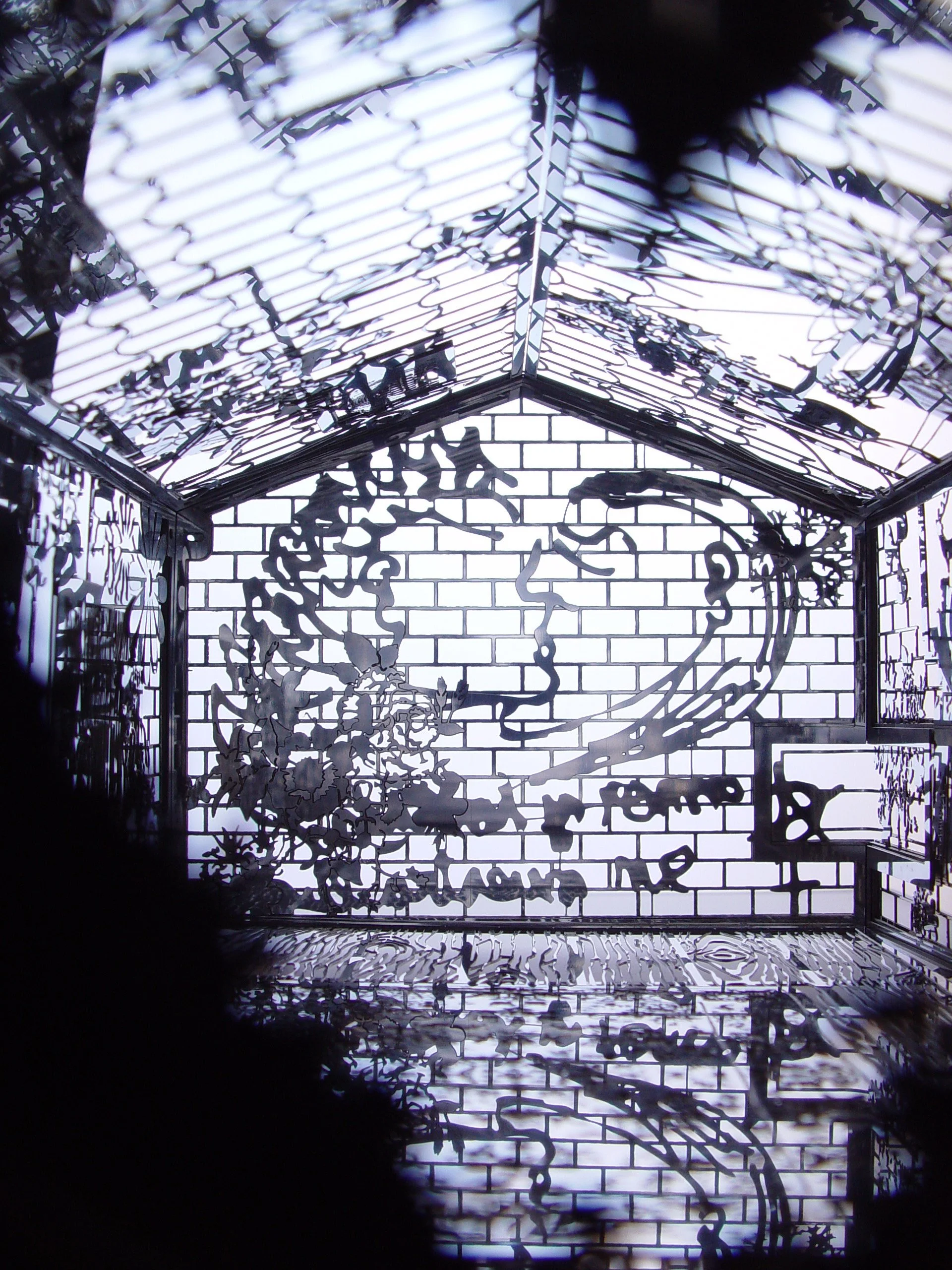






Miniature Monument to Materiality
House of Textures
Client
Dutch Architectural Institute (NAi) / Droog Design
Concept & Design
Tjep. / Frank Tjepkema
Production
Tjep.
Year
2005
Miniature Monument to Materiality
In the experimental ethos of Tjep., where digital precision dances with sensory indulgence, House of Textures stands as a diminutive architectural provocation—a 1:20 scale model that redefines the boundaries between structure and surface. Commissioned by the Dutch Architectural Institute for their "Smart Deco" initiative, this laser-cut pavilion emerged as a bold inquiry into how texture can dictate form, inviting viewers to explore the skin of architecture not as mere cladding, but as a storytelling epidermis. At just a few inches tall, it encapsulates Tjep.'s audacious vision: a house not built, but etched into existence, whispering of habitable worlds through intricate incisions.
Laser-Cut Labyrinth of Layers
Crafted from stacked sheets of translucent acrylic and frosted plexiglass, the structure unfolds like a topographic map of tactility—each layer meticulously perforated by a laser cutter to evoke diverse material essences: the rugged grain of wood, the slick sheen of metal, the porous weave of fabric, and the fluid drape of leather. Facades ripple with herringbone patterns and chevron motifs, while interiors reveal compartmentalized vignettes—a miniature kitchen with implied marble counters, a living room etched in velvet-like filigree—transforming the model into a microcosm of domestic life. Held aloft on a clear pedestal, it casts ethereal shadows that animate its surfaces, blurring the line between object and optical illusion.
From Architectural Prototype to Tactile Tale
This prototype birthed Tjep.'s iconic Chair of Textures the following year, scaling up the concept into a full-size throne of stainless steel lacework, now enshrined in museums like the Stedelijk and Centraal. Yet House of Textures remains the origin story, a proof-of-concept for parametric design's poetic potential. As Frank Tjepkema reflects, "Texture isn't decoration; it's the architecture's memory—etched, layered, and alive to the touch." Produced in limited editions by Droog Design, its modular assembly invites disassembly and reconfiguration, echoing Tjep.'s belief in furniture and form as fluid narratives.
Textures as Architectural Narrative
Beyond its technical wizardry—harnessing early CNC precision to democratize complexity—the piece probes deeper questions: In an era of uniform facades, how might varied tactilities foster emotional architecture? Its semi-translucent body allows glimpses of hidden depths, symbolizing the unseen stories within walls, while the interplay of light and shadow evokes the house's "inhabitants" in perpetual motion. Exhibited from Rotterdam's NAi to global design fairs, it has inspired a lineage of Tjep. works that prioritize haptics over heroics, proving that even a model can house dreams.
Droog's Delight in Dimensional Play
Collaborating with Droog's irreverent stable, House of Textures endures as a collector's curiosity and pedagogical gem, challenging architects to think small to dream large. In Tjep.'s pantheon of playful provocations, it reminds us that the finest homes aren't measured in square feet, but in the shiver of surfaces that beg to be felt— a textured testament to design's intimate alchemy.
